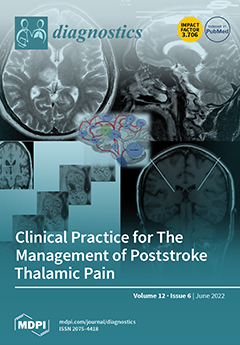The management of patients with peripheral artery disease (PAD) is integrative and multidisciplinary, in which cardiac rehabilitation (CR) plays a prognostic role in terms of functional status, quality of life, and long-term impact on morbidity and mortality. We conducted a prospective cohort study
[...] Read more.
The management of patients with peripheral artery disease (PAD) is integrative and multidisciplinary, in which cardiac rehabilitation (CR) plays a prognostic role in terms of functional status, quality of life, and long-term impact on morbidity and mortality. We conducted a prospective cohort study on 97 patients with PAD admitted to a single tertiary referral center. Based on a prognostic index developed to stratify long-term mortality risk in PAD patients, we divided the cohort into two groups: low and low-intermediate risk group (45 cases) and high-intermediate and high risk group (52 cases). We analyzed demographics, clinical parameters, and paraclinical parameters in the two groups, as well as factors associated with cardiological reassessment prior to the established deadline of 6 months. Obesity (
p = 0.048), renal dysfunction (
p < 0.001), dyslipidemia (
p < 0.001), tobacco use (
p = 0.048), and diabetes mellitus (
p < 0.001) are comorbidities with long-term prognostic value. Low-density lipoprotein cholesterol (
p = 0.002), triglycerides (
p = 0.032), fasting glucose (
p = 0.011), peak oxygen uptake (
p = 0.005), pain-free walking distance (
p = 0.011), maximum walking time (
p < 0.001), and maximum walking distance (
p = 0.002) influence the outcome of PAD patients by being factors associated with clinical improvement at the 6-month follow-up. PAD patients benefit from enrollment in CR programs, improvement of clinical signs, lipid and carbohydrate profile, and weight loss and maintenance of blood pressure profile within normal limits, as well as increased exercise capacity being therapeutic targets.
Full article






